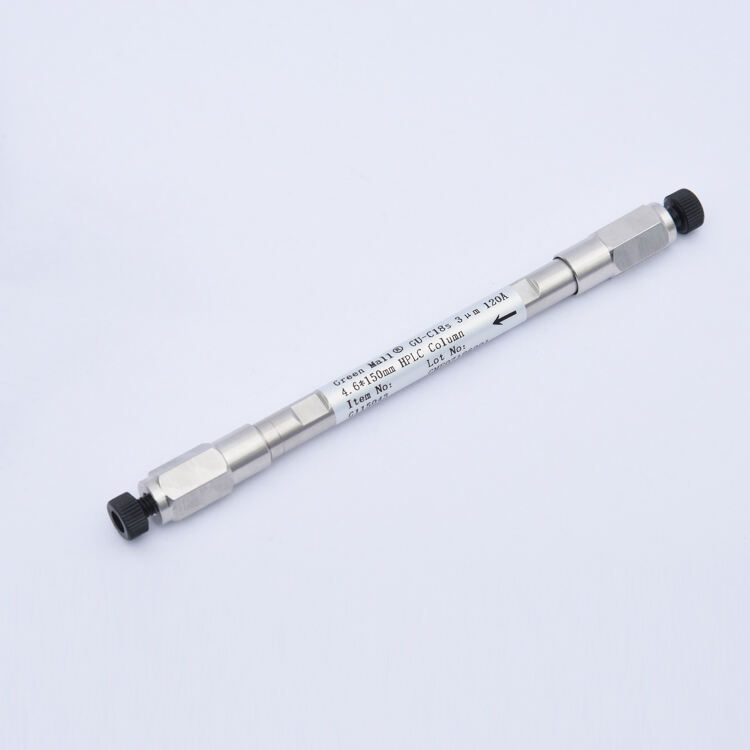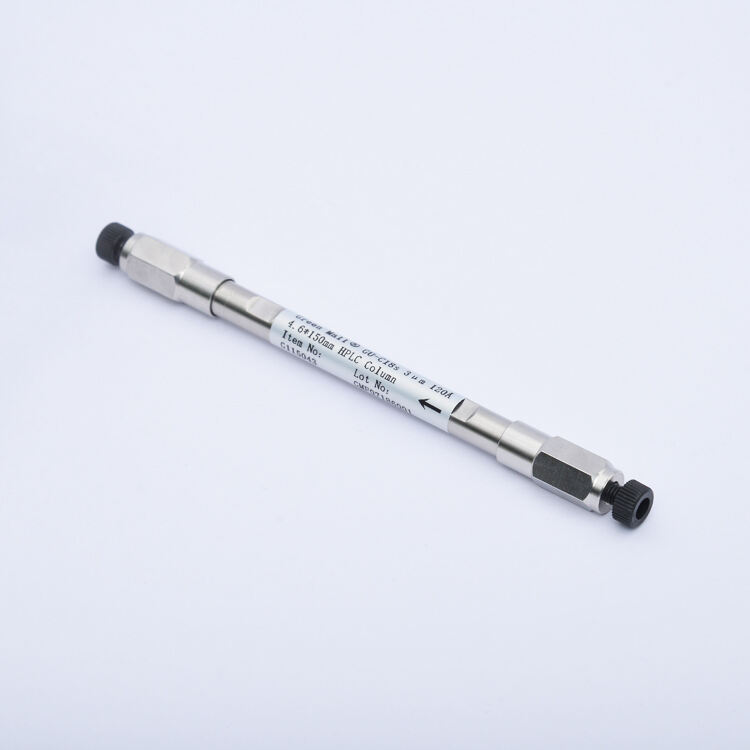Understanding the Fundamental Role of HPLC Columns in Chemical Analysis
High-Performance Liquid Chromatography (HPLC) has revolutionized chemical analysis, with the HPLC column serving as its beating heart. This sophisticated analytical tool enables scientists and researchers to separate, identify, and quantify compounds with remarkable precision. Whether in pharmaceutical development, environmental testing, or food safety analysis, HPLC columns play an indispensable role in modern analytical chemistry.
The importance of HPLC columns extends far beyond basic separation techniques. These specialized tubes packed with carefully selected materials represent decades of scientific advancement and engineering precision. Their ability to facilitate the separation of complex mixtures has made them essential in quality control laboratories, research facilities, and industrial settings worldwide.

The Anatomy of an HPLC Column
Core Components and Construction
An HPLC column consists of several key components working in harmony. At its core lies the stainless steel or polymer tube, designed to withstand high pressures and chemical exposure. Inside this housing, specially treated silica particles or other stationary phase materials are packed with extreme precision. The end fittings and frits protect the packing material while allowing mobile phase and sample flow.
The quality of column construction directly impacts its performance. Modern HPLC columns utilize uniform particle sizes and advanced bonding technologies to ensure consistent separation results. The internal surface area can reach several hundred square meters per gram of packing material, providing extensive interaction sites for sample components.
Stationary Phase Variations
The stationary phase determines the column's separation mechanism and selectivity. Reverse-phase columns, featuring hydrophobic alkyl chains bonded to silica particles, remain the most widely used type. Normal-phase columns, ion-exchange columns, and size-exclusion columns offer alternative separation mechanisms for specific applications.
Advanced bonding technologies have enabled the development of hybrid particle technologies, combining the best properties of silica and organic materials. These innovations have expanded the pH range and stability of modern HPLC columns, allowing for more diverse applications.
Separation Mechanisms and Principles
Interaction Dynamics
The separation process in an HPLC column relies on the differential interaction between sample components, the stationary phase, and the mobile phase. As the sample travels through the column, compounds with stronger affinity for the stationary phase move more slowly than those with weaker interactions. This difference in migration rates leads to separation.
The nature of these interactions can vary significantly depending on the column type. Hydrophobic interactions dominate in reverse-phase chromatography, while electrostatic forces play a crucial role in ion-exchange separations. Understanding these mechanisms helps analysts optimize their separation methods.
Efficiency and Resolution Factors
Column efficiency is measured by theoretical plate count and height equivalent to a theoretical plate (HETP). These parameters reflect the column's ability to produce sharp, well-resolved peaks. Modern HPLC columns can achieve tens of thousands of theoretical plates per meter, enabling high-resolution separations.
The resolution between peaks depends on three factors: efficiency, selectivity, and retention. Column manufacturers continue to improve these parameters through innovations in particle technology and surface chemistry.
Applications and Industry Impact
Pharmaceutical Analysis
In pharmaceutical research and quality control, HPLC columns enable the precise determination of drug purity, stability, and degradation products. The pharmaceutical industry relies heavily on these columns for both research and regulatory compliance. From drug development to final product testing, HPLC columns provide the analytical backbone for ensuring medication safety and efficacy.
The development of ultra-high performance liquid chromatography (UHPLC) columns has further enhanced the capabilities of pharmaceutical analysis, offering faster separations without sacrificing resolution. This advancement has significantly improved laboratory throughput and efficiency.
Environmental Monitoring
Environmental scientists utilize HPLC columns to analyze pollutants, pesticides, and other contaminants in water, soil, and air samples. The versatility of these columns allows for the detection of trace-level compounds in complex environmental matrices. This capability is crucial for monitoring environmental quality and ensuring compliance with regulations.
Recent developments in column technology have improved the detection limits and selectivity for environmental contaminants, enabling more comprehensive environmental assessments and better protection of public health.
Maintenance and Optimization
Column Care Guidelines
Proper maintenance significantly extends HPLC column life and ensures consistent performance. Regular cleaning, appropriate storage conditions, and careful mobile phase preparation help prevent common issues like contamination and degradation. Following manufacturer guidelines for pH ranges, pressure limits, and compatible solvents is essential.
Preventive maintenance practices include regular system suitability tests, monitoring column backpressure, and maintaining proper flow rates. These measures help identify potential problems before they affect separation quality.
Performance Optimization Strategies
Optimizing HPLC column performance involves careful consideration of multiple parameters. Mobile phase composition, temperature control, and injection volume all play crucial roles in separation quality. Modern method development often utilizes computer modeling and automated screening to identify optimal conditions.
Advanced column technologies, such as core-shell particles and monolithic columns, offer alternatives for improving separation speed and efficiency. Understanding the advantages and limitations of these options helps analysts choose the most suitable column for their specific applications.
Frequently Asked Questions
How long does an HPLC column typically last?
The lifespan of an HPLC column varies significantly depending on usage patterns, sample types, and maintenance practices. Under optimal conditions and proper care, a column can last for several thousand injections. However, complex samples, harsh conditions, or poor maintenance can significantly reduce this lifetime.
What factors affect HPLC column selection?
Key factors include the nature of the analytes (molecular size, polarity, ionic character), required resolution, sample matrix complexity, and analysis time constraints. Additional considerations include pH range requirements, pressure limitations, and compatibility with the mobile phase.
Can damaged HPLC columns be regenerated?
While some forms of column deterioration can be reversed through proper cleaning and regeneration procedures, severe damage is often permanent. Regular maintenance and careful operation are the best approaches to prevent column damage and extend operational life.
What are the latest trends in HPLC column technology?
Current trends include the development of smaller particle sizes for increased efficiency, biocompatible materials for biological samples, and specialized surface chemistries for specific applications. Green chemistry initiatives are also driving the creation of columns compatible with environmentally friendly mobile phases.




